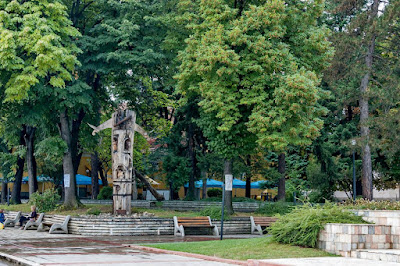From Flour to Flower City: A Brief History of Rochester, NY
Rochester, New York, sits where the Genesee River meets Lake Ontario. This city has a rich past that shaped its growth from a small settlement to a major urban center. The story of Rochester shows how one place can change and adapt over time.
Early Beginnings
Before European settlers arrived, the land belonged to the Seneca people, part of the Haudenosaunee (Iroquois) Confederacy. They lived on this land for centuries, using the fertile soil and waterways for food and travel.
In 1803, Colonel Nathaniel Rochester and two partners bought 100 acres near the Genesee River falls. This purchase started the path to what would become the city of Rochester. The falls offered water power, a key factor in the city's early growth.
The opening of the Erie Canal in 1825 changed everything. This new water route linked the Great Lakes to the Atlantic Ocean. It cut through Rochester, making it easy to ship goods east and west. The city soon became a busy trade center.
The Flour City Era
Rochester earned its first nickname, "The Flour City," in the 1830s. The city became the largest flour producer in the United States. Local mills used water power from the Genesee River falls to grind wheat into flour. At peak times, these mills made over 500,000 barrels of flour each year.
The mills brought jobs and money. The city grew fast as people moved there for work. Between 1830 and 1850, the population jumped from 9,200 to 36,000 people. Rochester became the first American "boomtown."
Social Reform and Progress
Rochester stood out as a center for social change in the 19th century. The city played a key role in both the abolition movement and women's rights.
Frederick Douglass, a former slave and famous abolitionist, moved to Rochester in 1847. There, he published his anti-slavery newspaper, "The North Star." His home became a stop on the Underground Railroad, helping escaped slaves reach freedom in Canada.
Susan B. Anthony, a leader in the women's suffrage movement, also lived in Rochester. She fought for women's right to vote and other social causes. Her house still stands as a national historic landmark and museum.
The Flower City Transition
By the mid-1800s, flour production started to move west. Rochester's economy had to change. Local nurseries grew and the city became known for seed companies and plant nurseries. George Ellwanger and Patrick Barry started the most famous nursery in 1840.
This shift from flour to flowers gave Rochester its second nickname: "The Flower City." The annual Lilac Festival, which still runs today, celebrates this horticultural heritage.
The Rise of Industry
In the late 19th century, Rochester grew into an industrial center. Many companies started there that would later become famous.
George Eastman founded Kodak in Rochester in 1888. His company made photography simple and affordable for regular people. Kodak became one of the world's most known brands and Rochester's biggest employer for many decades.
Bausch & Lomb, started by German immigrants John Bausch and Henry Lomb, made optical products like lenses and glasses. Their company helped make Rochester a center for optical research and production.
Modern Rochester
The 20th century brought both growth and challenges to Rochester. The city reached its peak population of about 330,000 in 1950. After that, like many northern industrial cities, Rochester faced issues as manufacturing jobs left and people moved to the suburbs.
Rochester worked to reinvent itself. The city put money into downtown projects and waterfront areas. The High Falls district shows how old industrial areas can find new life as cultural and entertainment spaces.
Today, education and health care stand as major parts of Rochester's economy. The University of Rochester and Rochester Institute of Technology employ thousands and bring students from around the world. These schools help make Rochester a center for research and innovation.
Rochester's parks and green spaces offer residents places to enjoy nature within the city limits. These areas show the city's commitment to a good quality of life for its people. The city continues to develop these spaces as part of its urban planning efforts, balancing growth with environmental concerns.
Cultural Life
Rochester has a rich cultural scene. The city hosts many festivals throughout the year. The Lilac Festival each May draws huge crowds to Highland Park. The International Jazz Festival brings top musicians to the city each summer.
The Rochester Philharmonic Orchestra, founded in 1922, ranks as one of America's top regional orchestras. The Strong National Museum of Play attracts families from all over with its unique focus on the history and importance of play.
The George Eastman Museum, the world's oldest photography museum, sits in Eastman's former mansion. It holds one of the top film and photo collections anywhere.
Food and Drink
Rochester has some unique food traditions. The "garbage plate" started at Nick Tahou Hots and contains a mix of meats, potatoes, and macaroni salad all on one plate. It remains a local favorite and curious attraction for visitors.
The city also has strong ties to the growing Finger Lakes wine region. Many local restaurants feature wines from nearby vineyards, showing Rochester's connection to its surrounding rural areas.
Looking Forward
Rochester faces the same challenges as many mid-sized American cities. It works to grow its economy, improve city schools, and keep young people from leaving. Yet the city shows the same spirit that helped it change from Flour City to Flower City long ago.
Today's Rochester builds on its past while looking to the future. The city that once powered America's breadbasket, then filled its gardens, now works in fields like optics, imaging, and health care. This ability to change with the times gives Rochester its strength and character.
From its humble start at the Genesee falls to today's diverse urban center, Rochester's history shows a place that keeps finding new ways to grow and thrive. The city's story continues to unfold along the banks of the river that first brought it to life.



